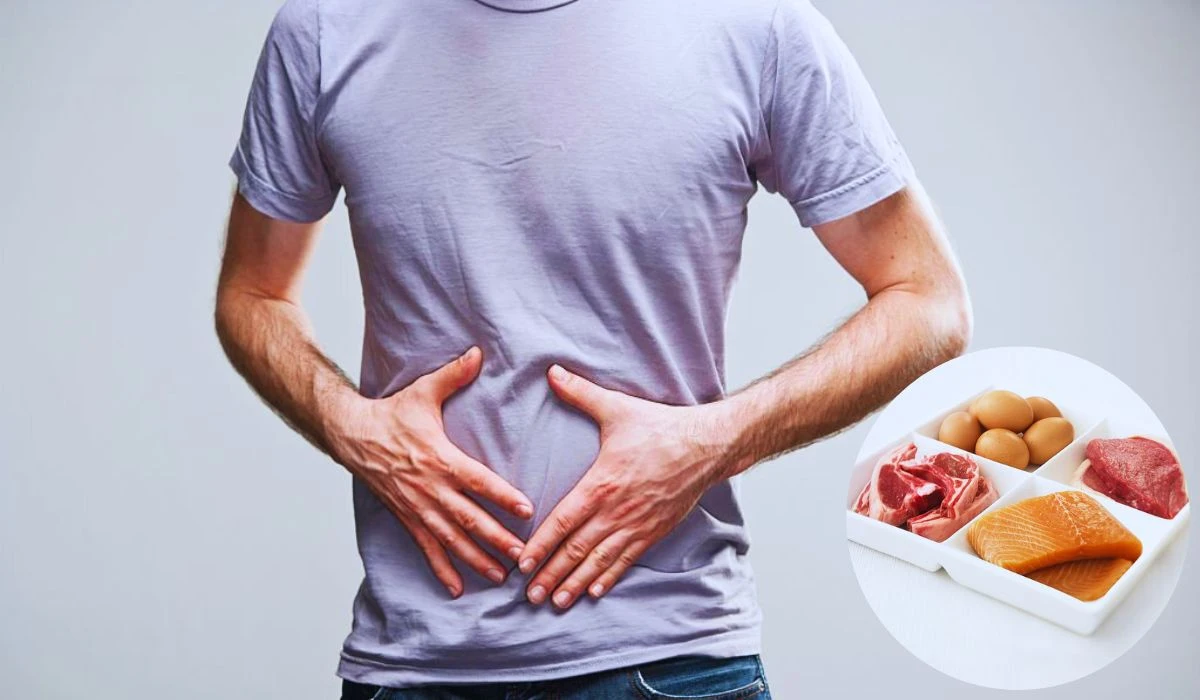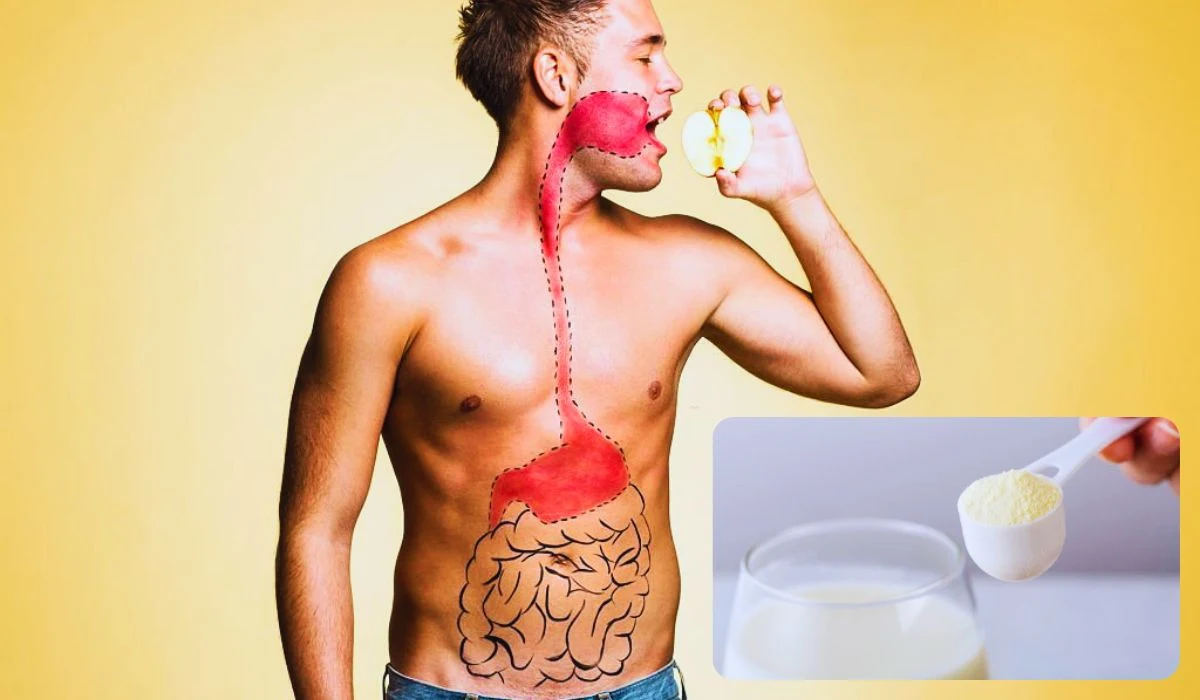Protein digestion is vital for health and well-being. Our bodies break down complex protein molecules into simpler components called amino acids. These are then absorbed into the bloodstream, playing a crucial role.
The importance of protein digestion cannot be overstated. Amino acids are the building blocks of proteins. They create enzymes, hormones, and antibodies that regulate physiological processes. Plus, proteins provide energy when carbohydrates and fats are not enough.
Another benefit of protein digestion is supporting a healthy immune system. Antibodies that fight off harmful pathogens are made of proteins. So, digestion helps our body defend against infections and diseases.
Additionally, protein digestion helps with muscle development and maintenance. When we exercise, our muscles get damaged. Protein breakdown and repair rebuild these tissues, leading to increased strength and endurance.
Role Of Enzymes In Protein Digestion
Protein digestion is complex. Enzymes are the key players; they break down proteins into smaller peptides and amino acids.

Let’s take a look at how enzymes aid digestion:
| Enzymes | Function |
| Pepsin | Stomach secretes it; breaks down proteins into polypeptides. |
| Trypsin | Pancreas produces; further breaks down polypeptides into peptides. |
| Chymotrypsin | Pancreas produces; targets aromatic amino acid residues in proteins. |
| Carboxypeptidase | Pancreas releases; cleaves off individual amino acids from the carboxy-terminal end of peptides. |
| Aminopeptidase | Intestinal cells have; remove amino acids from the amino-terminal end of peptides. |
More enzymes like Dipeptidase and Tripeptidase convert small peptides into individual amino acids.
These enzymes have specific substrates and optimal pH conditions for activity. Pepsin works best in the stomach’s acidic environment, and trypsin and chymotrypsin thrive in pancreas secretions‘ slightly alkaline conditions.
Understanding The Protein Digestion Process
To understand the protein digestion process, delve into the two phases: the stomach phase and the small intestine phase. The stomach phase involves specific enzymes, while the small intestine phase requires different enzymes for absorption.
▶️ The Stomach phase
The stomach phase is a key part of protein digestion. In this stage, proteins are chopped up and prepared for absorption in the small intestine. Proteases break proteins into smaller peptides. Hydrochloric acid is released to create an acidic environment that aids enzyme activity. Plus, gastric mixing helps mix proteins with secretions.
💠Role Of Hydrochloric Acid In Protein Denaturation
Hydrochloric acid is critical for protein denaturation. It chops up complex proteins into simpler forms that the body can digest. Here’s the scoop:
Optimal pH – HCl produces an acidic environment in the stomach, with the perfect pH for protein digestion.
Enzyme Activation – HCl converts pepsinogen into pepsin – a superhero snack that helps break proteins into peptides.
Denaturation – Low pH from hydrochloric acid unravels the three-dimensional protein structure, making it easily digestible.
Microbial Control – It also kills any harmful bacteria or germs that may enter the body through food.
💠Activation Of Pepsinogen Into Pepsin
Pepsinogen is essential for protein digestion. Its conversion to pepsin is a key step. This is done when hydrochloric acid (HCl) is present in the stomach, as it triggers the activation of pepsinogen. Once activated, pepsin can start to break proteins into smaller peptides.
Plus, pepsinogen can also be activated by other proteases such as trypsin from the pancreas. This ensures efficient protein digestion.
▶️ The Small Intestine Phase
The Small Intestine Phase is a vital component of protein digestion. This happens in the duodenum, jejunum, and ileum of the small intestine.
Enzymes are needed for breaking down proteins into smaller peptides and amino acids. These include trypsin (released by the pancreas and activated by enterokinase) and peptidase.
Bile salts also play an important role, helping to emulsify dietary fats. This makes fat digestion easier and allows for better absorption of fat-soluble vitamins.
Microvilli in the small intestine lining increase its surface area, aiding the absorption of nutrients. These then pass through blood vessels or lymphatic vessels to different parts of the body.
The importance of this phase in protein digestion is clear. It helps extract essential nutrients for our health.
💠Role Of Pancreatic Enzymes In Protein Breakdown
Proteins are broken down by pancreatic enzymes through a complex process. These enzymes, including trypsin, chymotrypsin, and carboxypeptidase, have a crucial role in the digestion of proteins.
Let’s take a closer look at how they work:
| Enzyme | Function |
| Trypsin | Hydrolyzes peptide bonds |
| Chymotrypsin | Cleaves peptide chains |
| Carboxypeptidase | Removes amino acids from the carboxyl end |
These enzymes catalyze the breakdown of large protein molecules into smaller peptides and even individual amino acids. This process is vital for the absorption of proteins in the intestine.
💠Activation Of Trypsinogen Into Trypsin
Trypsinogen is an inactive enzyme produced by the pancreas. In the small intestine, it’s activated into trypsin when it meets enterokinase – an enzyme attached to the brush border of intestinal cells. Enterokinase cleaves a peptide bond in trypsinogen, resulting in a transformation to trypsin.
Trypsin then digests protein into smaller peptides and amino acids. This is done through proteolysis, which involves hydrolyzing peptide bonds. Trypsin also activates other pancreatic enzymes from their inactive forms.
💠Further Breakdown Of Peptides Into Amino Acids
Breaking down peptides into amino acids is key for protein digestion. Peptidases cleave peptides into smaller fragments which are then broken down further into individual amino acids. This makes a pool of free amino acids for absorption by intestinal cells and transport to tissues for protein synthesis.
Absorption Of Digested Protein
To facilitate the absorption of digested protein, the role of brush border enzymes in the further breakdown of peptides and the transport of amino acids into the bloodstream is crucial. These sub-sections provide a comprehensive understanding of how the digestive system effectively processes and utilizes protein for various bodily functions.

🔶 Role Of Brush Border Enzymes In Further Breakdown Of Peptides
Brush border enzymes are important for peptide breakdown. They are found on the microvilli of the small intestine. Protein digestion leads to the aminopeptidases and dipeptidases at the brush border breaking down peptide chains into individual amino acids. These can then be absorbed.
Aminopeptidases hydrolyze amino acids from the peptide’s amino end. Dipeptidases break the bond between two amino acids, allowing for the completion of peptide breakdown. This helps the body absorb nutrients better.
🔶 Transport Of Amino Acids Into The Bloodstream
It’s essential for amino acids to be transported into the bloodstream. This process has complex mechanisms in place to guarantee effective delivery.
To understand this better, let’s look at the two main types of transporters: sodium-dependent amino acid transporters (SAATs) and sodium-independent amino acid transporters (SIATs). SAATs need a sodium ion gradient to move amino acids, while SIATs don’t depend on this gradient.
A table can help explain the features of these transporters:
| Transporter Type | Sodium Dependency | Examples |
| SAAT | Yes | Solute Carrier Family 6 |
| SIAT | No | Solute Carrier Family 7 |
It’s amazing to see how different transporters are crucial for amino acid transportation. SAATs utilize energy from sodium gradients to transport amino acids. SIATs have independent mechanisms that don’t rely on sodium gradients.
Also Check: What Are The Severe Heartburn Symptoms, Causes, And Remedies?

